Appalachian State University’s Department of Chemistry and Fermentation Sciences has completed its first few batches, producing almost 45 gallons of freshly made hand sanitizer with more batches currently fermenting in tanks to help supply the campus during the COVID-19 pandemic.
“This was an idea that came straight from faculty. They saw a need and developed a plan to make it happen. It’s great to see the plan working as they produce sanitizer for the campus,” said Neva J. Specht, Dean, College of Arts and Sciences.
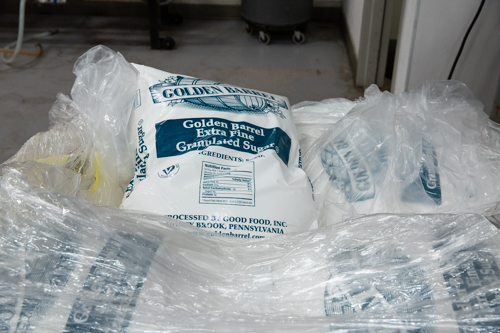
A bag of beet sugar used to ferment into ethanol for hand sanitizer production.
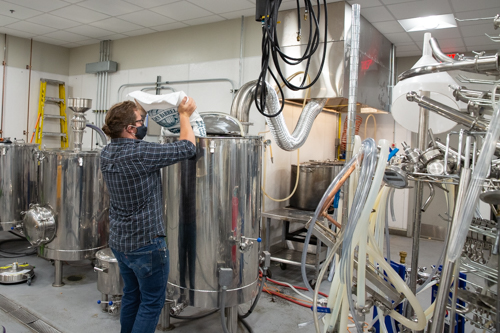
Daniel Parker adding a bag of sugar to the boil kettle. He will also add all of the other nutrients needed for a successful ferment, then bring it up to boil before cooling it back down and adding it to the fermenter.
Daniel Parker, operations manager for the fermentation facility and lecturer in the Department of Chemistry and Fermentation Sciences is working with senior Graham Carter, from Asheville, N.C., to fine-tune their recipe for custom hand sanitizer. The process starts by fermenting about 100 gallons of a sugar solution after adding nutrients for the yeast and minerals to adjust the pH. After fermentation is complete – around two to three weeks, the solution, which now contains between 10 and 12% ethanol, is distilled in a 300 L still which holds about 80 gallons.
Faculty worked with administrators and general counsel to obtain an Experimental Distilled Spirits permit from the Tax and Trade Bureau (TTB) to be able to use the 300 L still for use in hand sanitizer production as well as for use in course instruction and research.
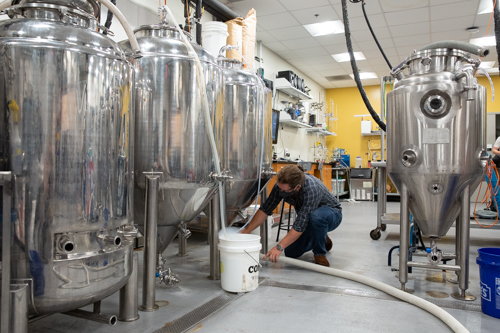
Daniel Parker is connecting a hose to the fermentation vessel. The sugar water from the boil kettle will be pumped through a chiller to cool it down and then pumped through this line to fill the fermentation vessel.
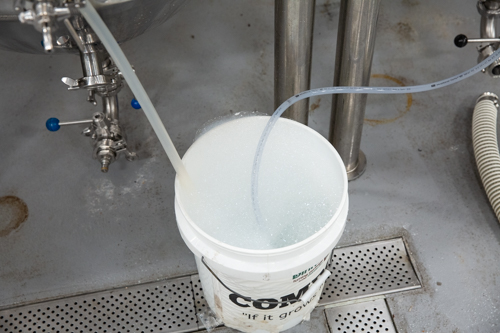
A batch of sugar water fermenting away. Fermentation uses yeast to break down sugar into ethanol and CO2. The ethanol collects in the fermentation vessel and the CO2 is vented through a sanitizer solution producing the bubbles you see in the picture.
Parker and Carter collect several different fractions over time and as the temperature in the still increases, beginning with the heads (which have the lowest boiling points and come out first, and which also contain some methanol and are, therefore, discarded), followed by the heart, which comprises the bulk of the distillation (and of which they collect a few different fractions - this portion contains the most ethanol, between 75 and 95%), and then the tails, or the last portion of the distillation, which has higher boiling point congeners (fatty acids and other flavor compounds), which if you were distilling a spirit to drink, would be blended with the heart to achieve the desired flavor profile. These fractions are tested for ethanol content and blended to achieve the correct ethanol concentration to make hand sanitizer.
Next, they add glycerol and aloe to prevent the drying out of skin; hydrogen peroxide to sanitize the container and a carbomer thickening agent so that it is a nice consistency for application.
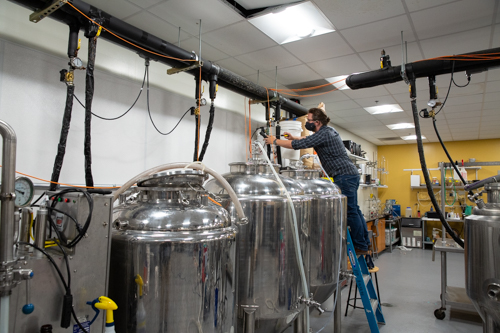
Daniel Parker connecting the blow off tube to the fermentation vessel to allow CO2 to be vented off.
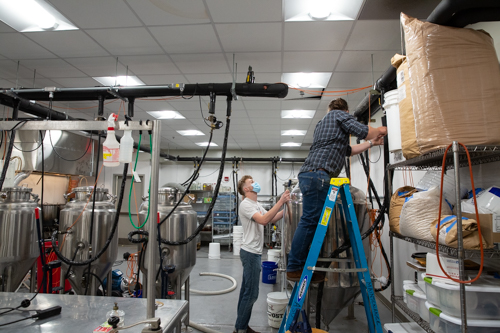
Daniel Parker turning on the glycol line used to keep the fermentation vessel temperature controlled. Fermentation produces heat, and the chilled propylene glycol is pumped in a jacket surrounding the fermentation vessel to keep it at the desired temperature.
The College of Arts and Sciences helped the Department fund this project. Most of the materials were purchased, but the main ingredient, ethanol, which is the most expensive, was produced in house.
Based on the materials purchased, they plan to make around 100 gallons of hand sanitizer, made from 2500 lbs of beet sugar. The distribution to campus is managed by Environmental Services working in conjunction with Campus Health and Safety on where the greatest need and use of the product is on campus.
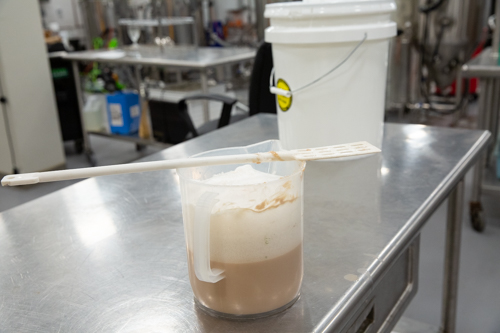
Rehydrated yeast starting to bubble.
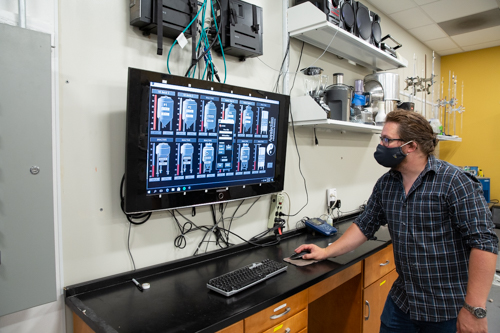
Daniel Parker setting the temperature for the fermentation tank.
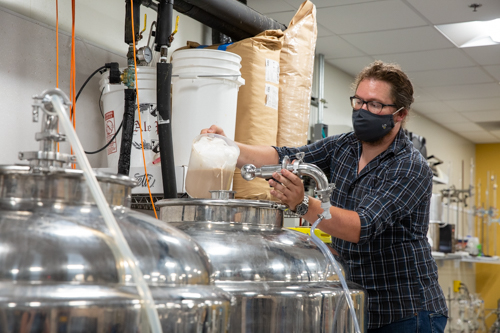
Daniel Parker pitching the yeast into the fermentation tank.
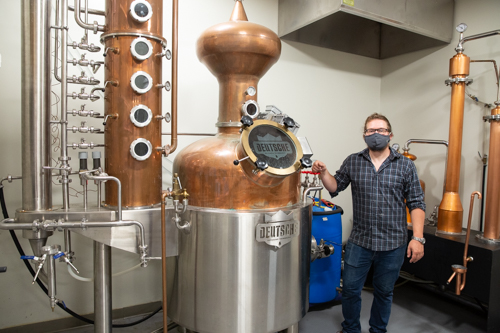
Daniel Parker next to the 300 L steam jacketed pot still made by Deutsche Beverage Technology out of Charlotte, NC. A 300 L batch of fermented sugar water will yield about 30 L of ethanol.
###
About the A.R. Smith Department of Chemistry and Fermentation Sciences
The A.R. Smith Department of Chemistry and Fermentation Sciences offers a Bachelor of Arts in chemistry, a Bachelor of Science in chemistry with eight different concentrations and an interdisciplinary Bachelor of Science degree in fermentation sciences. The department’s programs prepare students to attend graduate and professional schools, as well as for employment in the pharmaceutical and fermentation industries and other business sectors. Learn more at https://chemistry.appstate.edu.

